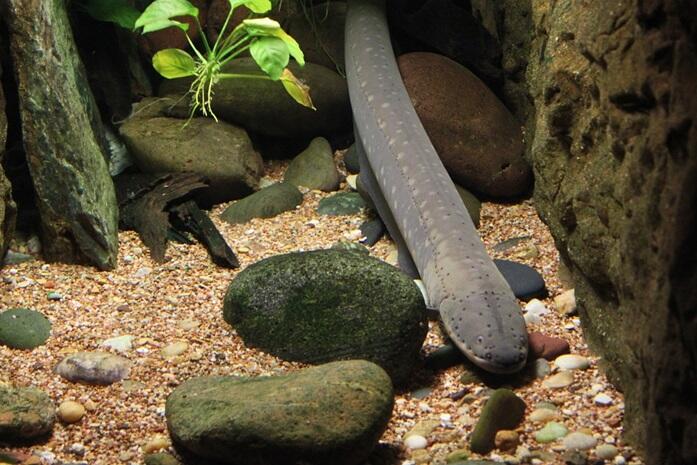The Japanese eel, which is listed as an endangered species, settles into moderately sized crevices, where it can grow to large sizes. A joint research team consisting of Yumeki Oto of the Kyushu University Graduate School (currently at the Japan Fisheries Research and Education Agency, National Fisheries University), Rei Sakanoue (currently at the Hokkaido Research Organization), Noritaka Mochioka, Kazuki Matsushige (currently at the Faculty of Agriculture, Kyushu University), Yusuke Hibino of the Kitakyushu Museum of Natural History and Human History, and Kazuo Uchida of the National Federation of Inlandwater Fishery Cooperatives (currently at the Japan Fisheries Research and Education Agency), made this discovery.

Eels living in rivers actively use brackish water, which is influenced by seawater, during their growth period. However, brackish water areas are easily taken over by human development and concrete revetments are being constructed to prevent flooding that result in the loss of places for eels to hide.
The research group varied the size of the stones packed in stone cages to determine what size of stone gap would encourage eels to inhabit them and grow. They tracked growing eels with dye labelling and found that eels prefer gaps in stones of about 10 cm deep that can fit their entire body, and that they are most likely to inhabit these over the medium to long term. They also noticed an increase in the girth length of eels after they have taken up residence in the gaps. Prey fish were most frequently found in the gaps between stones with a depth of about 10 cm, suggesting that the relatively narrow pore structure provides shelter not only for eels but also for their prey.
Restoration of the pore structure of floating stones lost from riverine brackish waters has shown the potential to promote the establishment of Japanese eels and their prey, as well as their growth.
Journal Information
Publication: Estuaries and Coasts
Title: Artificial shelters that promote settlement and improve nutritional condition of Japanese eels in a human-modified estuary
DOI: 10.1007/s12237-022-01152-z
This article has been translated by JST with permission from The Science News Ltd. (https://sci-news.co.jp/). Unauthorized reproduction of the article and photographs is prohibited.




